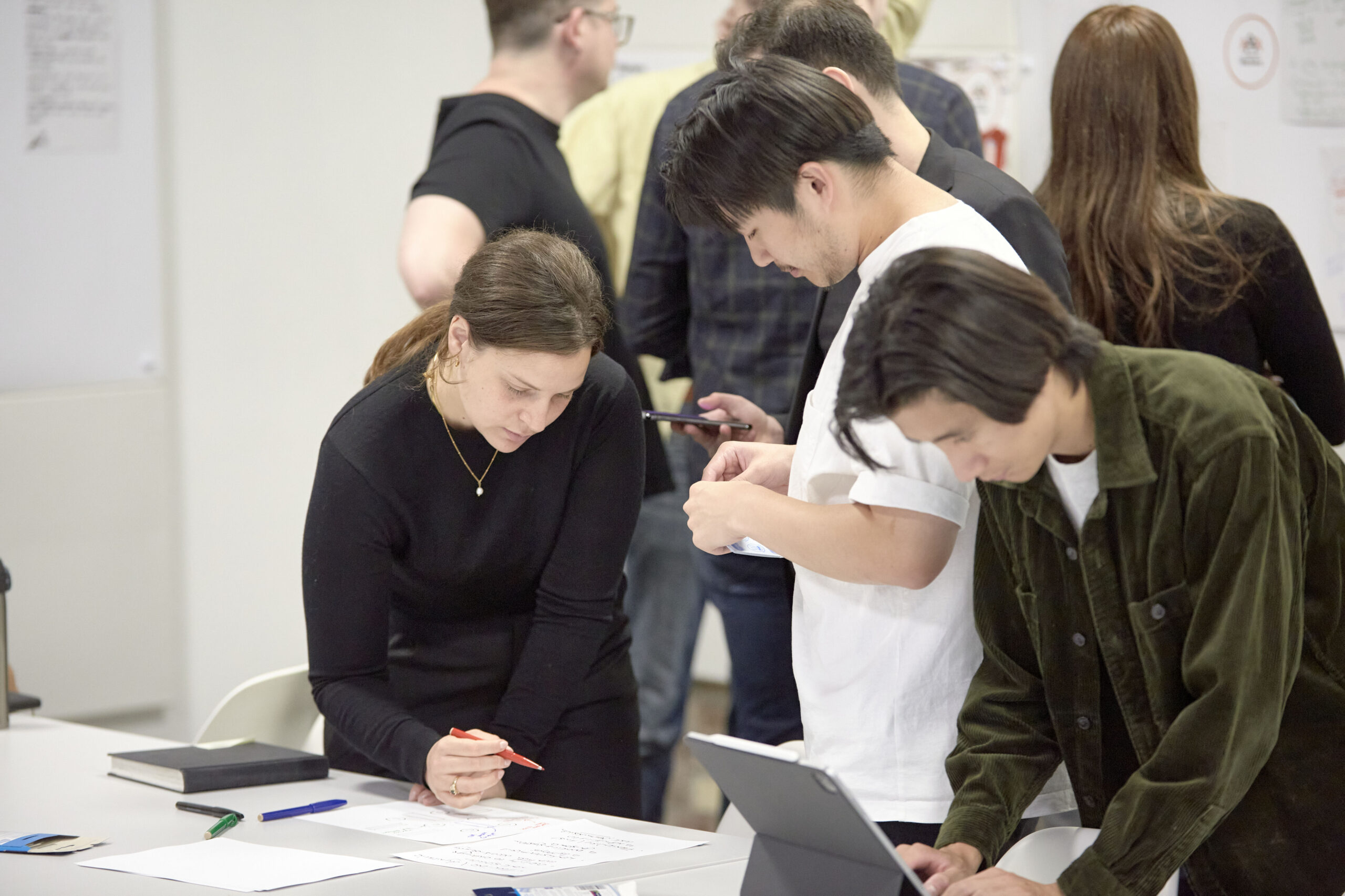
There are three categories of drawing; Hand-drawn, Digital, Hybrid. This is a competition that dispels the myth that architectural drawing is a dying art, but alive and well and manifesting itself in ever more ingenious means of expression afforded by today’s technology. Here it is clearly evident that there is equal value in the craft of each of the categories, as the tools available to achieve a means to an end.
Time is a recurring theme that runs throughout the exhibition and is a concept that can be explored and encapsulated within a drawing that is difficult to achieve with other architectural representations. It is this theme that the digital category winner and overall winner of the prize tackles head on. Li Han’s, ‘The Samsara of Building No.42 on Dirty Street’, a symphony of a drawing made up of four movements, four digital isometric and axonometric drawings, depicting a chronological narrative of a residential building in Beijing – a sort of ‘Where’s Wally’ meets the ‘Sims’ in Georges Perec’s ‘Life – a User’s Manual’.




Every drawing on show is a worthy contender for the prize. Wittily, a couple of the hybrid entries display what can only be described as digital soiling, as if they were from the found pages of a windblown newspaper. Whilst the parametric lines of Juan Alberto Arjona Belmonte’s, The Tower of Memory: the Tower and the Landscape’ are so delicate you dare not breath over them for fear that they might slip off the paper. Carlijn Kingma’s, ‘The Babylonian Tower of Modernity’, which recalls the story of the Tower of Babel, in light of the modern religion of capitalism, was selected as the winner of the hand-drawn category – a familiar image, which has been reimagined as a post-industrial landscape with its prematurely failing unfinished tower at its centre. It is a breath-takingly ambitious drawing in terms of its content, scale and skill.

That Kingma’s delicately draughted imagery is perhaps the most accessible drawing on show is telling of the exhibition as a whole. Many of the visitors to that I spoke to, whilst they spent time to dwell on the drawings, found the content largely inaccessible and perhaps even irrelevant. This is a shame and perhaps says more about our profession and our current priorities. It’s possible that many of the drawings were university projects and never originally intended to be seen out of the context of their institutions or other accompanying drawings. However, their complexity, often aided by technology, sometimes makes it difficult to find focus and find meaning through the multiplex layers of shimmering clouds and flying machines. In future years it might be interesting to see more forms of architectural drawing making the shortlist alongside university thesis projects: measured drawings, details, concept sketches, construction drawings. Drawings that possess a specific purpose, or executed with an element of jeopardy.
In its second year The Architecture Drawing Prize is gaining recognition as an international platform for the celebration and recognition of the art and skill of architectural drawing. The exhibition of the shortlisted entries at Sir John Soane’s Museum in Lincoln Inn Fields runs until the 18th of November. The drawings are displayed well and with care. They sit well within Sir John Soane’s wider collection or drawings exhibited at the museum, but don’t forget to bring a handkerchief to wipe the glass should you accidentally get a little too close.
Exhibition details: https://www.soane.org/whats-on/exhibitions/architecture-drawing-prize-0
The Architecture Drawing Prize is curated by the Sir John Soane’s Museum together with Make Architects and the World Architecture Festival.
On Wednesday 7 November Ken Shuttleworth, founder of Make, is speaking at Sir John Soanes’s Museum as part of the Museum’s “Critical Drawings Talks” series. To book: https://www.soane.org/whats-on/talks/critical-drawing-ken-shuttleworth




















































































































































































































































































